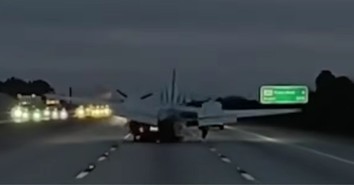At the "End of the Spear," A Tribe Turns From Violence

Oklahoma City, Okla. — In the '50s, five American missionaries dared to make contact with an Ecuadorean tribe considered the most violent ever documented by anthropologists. These five paid the ultimate price for their bravery, and accounts of their tragic story made headlines around the world. In “End of the Spear,” filmmakers explore the story from the tribe’s perspective – and the remarkable way God changed the tribe’s violent ways.
In 1956, Jim Eliot, Pete Fleming, Ed McCully, Nate Saint and Roger Youderian ventured into the eastern rainforests of Ecuador, where they made contact with the Waodani people, also known as the Aucas. With a homicide rate of 60 percent, the tribe’s behavior placed them on the verge of self-annihilation.
The missionaries’ story was made famous in the pages of Life Magazine, but no one has told the rest of the story – until now. Film maker Mart Green, founder of Every Tribe Entertainment, was inspired at a Wycliffe conference when he heard Nate Saint’s son introduce the tribe member who killed his father.
Steve Saint described how his family forgave and reconciled with ‘Mincaye’ and other tribe members. Today, the perpetrator and victim’s families are so close that Saint lovingly refers to the elderly man as ‘grandfather.’
The film – due in theaters January 20 – is not overtly Christian, but unveils the gospel in more subtle ways using the language of the Waodani tribe. For example, ‘Jesus’ or ‘God’ is never mentioned, but the Waodani word for God – ‘Waengongi,’ is used. One character tells another: “Waengogi had a son who was speared, but he did not spear back.”
The darker subtext and hidden motivations which led tribe members to attack and kill the five Americans is finally seen and understood.
Four American actors play the principal characters among the Waodani tribespeople, but the rest are played by the Emberra tribe in Panama. Filmmakers traveled to Ecuador to visit the actual site of the historical incident, but after riding a bus eight hours, flying another hour into the heart of the jungle, and then journeying six hours by dugout canoe, the actual location was judged too remote to support film crews. Instead, the lush jungle and river scenes were shot in an area of Panama closely resembling the actual setting.
New York actor Louie Leonardo was director Jim Hanon’s first choice to play ‘Mincayani,’ a composite character based on ‘Mincaye.’ Leonardo’s believability as a tribesman stems partly from his upbringing in the Dominican Republic. The loincloth-clad warrior prowls the jungle like a panther, his sleek athleticism overtly displayed. Leonardo delivers an inspired performance as he struggles with the transformation evident in another tribe member’s conversion to Christ.
The five missionaries come across as fun-loving, merry pranksters, who shatter some of our notions of stereotypical missionary behavior. “Our model is 'Chariots of Fire,' says Randy Swanson, with Every Tribe Entertainment. “People heard it ('Chariots') was a great story and they got in there and were confronted by a faith message perhaps they didn’t expect,” he says. “We’re all about reaching the culture with great stories, stories that show the transforming power of God’s Word.”
More information about the film can be found at www.endofthespear.com.
© 2006 Assist News Service. All rights reserved. Used with permission.
Originally published January 18, 2006.







